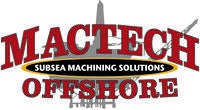Decommissioning an offshore platform can be a costly, complicated and dangerous endeavor. Decommissioning of a platform takes place if it is damaged or once it has reached the end of its useful life. Understanding the process can be confusing but Mactech Offshore has simplified it with the creation of a new infographic. This easy-to-understand tool explains the decommissioning process in its entirety including scenarios and examples that a client can use in deciding which decommissioning strategy is best for their unique situation.
The process of decommissioning is divided into six steps that begin when permits are obtained and conclude with site cleanup. Before beginning this process the platform must be evaluated in order to decide what type of removal is optimal. The type of removal differs case to case. Some determining factors include platform type, weight and weather. After these factors have been evaluated, a removal option is selected. Removal techniques vary from abrasives to different cutting techniques.
Included in these cutting technique options is Mactech’s patented articulating diamond wire saw. According to Mactech’s website, this tool is different from others in the industry based on these characteristics: the ability to keep divers out of the water, maintain controllable and precise cuts, and operate at a subsea weight of approximately 160lb. The saw helps combat safety concerns, as well as cuts down on the space needed on the seafloor to complete a job.
Mactech Offshore specialises in the offshore subsea market, deploying operators and equipment worldwide. From split frame cutters to diamond wire saws, the company designs, develops and applies these tailored cutting tools to marine services in the oil and gas industry and the offshore subsea market.
Mactech has the equipment and experience to perform and assist with any platform maintenance and removal operations.
The infographic is available here or for more information, please contact Mactech.

